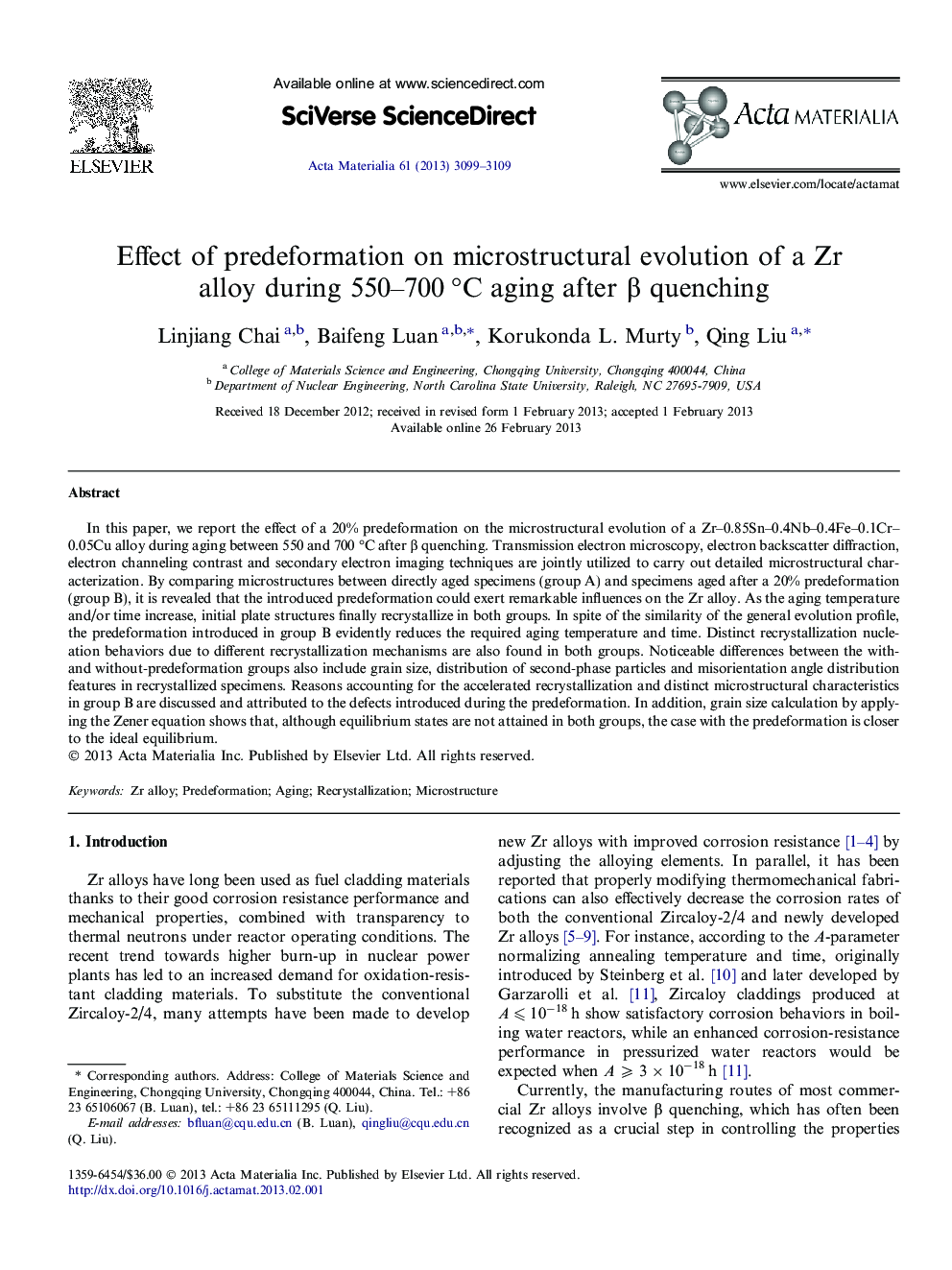| Article ID | Journal | Published Year | Pages | File Type |
|---|---|---|---|---|
| 10620297 | Acta Materialia | 2013 | 11 Pages |
Abstract
In this paper, we report the effect of a 20% predeformation on the microstructural evolution of a Zr-0.85Sn-0.4Nb-0.4Fe-0.1Cr-0.05Cu alloy during aging between 550 and 700 °C after β quenching. Transmission electron microscopy, electron backscatter diffraction, electron channeling contrast and secondary electron imaging techniques are jointly utilized to carry out detailed microstructural characterization. By comparing microstructures between directly aged specimens (group A) and specimens aged after a 20% predeformation (group B), it is revealed that the introduced predeformation could exert remarkable influences on the Zr alloy. As the aging temperature and/or time increase, initial plate structures finally recrystallize in both groups. In spite of the similarity of the general evolution profile, the predeformation introduced in group B evidently reduces the required aging temperature and time. Distinct recrystallization nucleation behaviors due to different recrystallization mechanisms are also found in both groups. Noticeable differences between the with- and without-predeformation groups also include grain size, distribution of second-phase particles and misorientation angle distribution features in recrystallized specimens. Reasons accounting for the accelerated recrystallization and distinct microstructural characteristics in group B are discussed and attributed to the defects introduced during the predeformation. In addition, grain size calculation by applying the Zener equation shows that, although equilibrium states are not attained in both groups, the case with the predeformation is closer to the ideal equilibrium.
Related Topics
Physical Sciences and Engineering
Materials Science
Ceramics and Composites
Authors
Linjiang Chai, Baifeng Luan, Korukonda L. Murty, Qing Liu,
